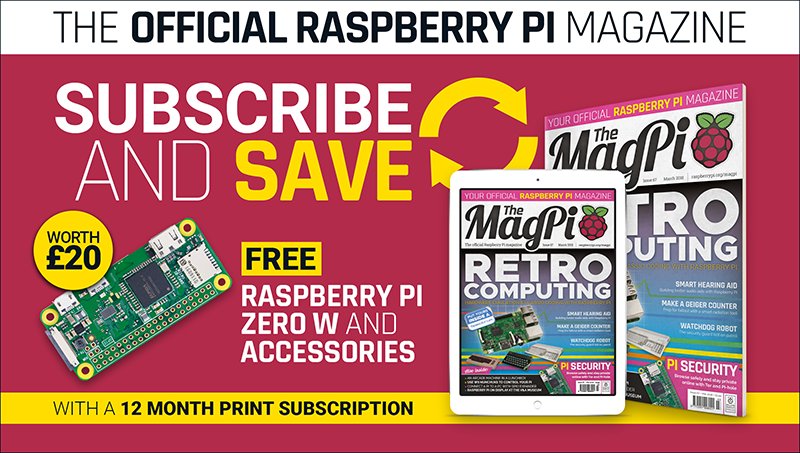
User experience engineer Simon Long walks through the new features of Raspbian ‘Buster’ and its revamped user interface
The launch of Raspberry Pi 4 brings not only new hardware but new software too: Raspbian ‘Buster’, a brand-new release – compatible, as always, with every Raspberry Pi model going right back to the pre-launch Alpha design – with a revamped, flatter user interface based on the upstream Debian ‘Buster’ Linux distribution.
Simon Long explains: “Due to the lack of obvious differences between Buster and Stretch, I wanted to do something to make it a bit more obvious that people actually had something new,” of his new interface design. When we moved from Jessie to Stretch, there was a similar lack of major differences, and people wondered whether or not they actually had the new version – I wanted to avoid that this time. Also, the overall UI design in terms of the appearance of buttons, controls, and the like really hasn’t changed significantly in the time I’ve been here – there have been some small tweaks, but it felt time for a change.”
Flatter is better
“The flatter appearance was driven by a few factors,” Simon continues. “First, it does seem to be a general tendency in UI design in recent years that flatter, simpler designs are in, and fussier, more complex designs are out – iOS, Windows, and Android have all done the same sort of thing. Second, Eben is a big fan of flatter UIs, and he kept nudging me in that direction!
“It’s a bit of a balancing act, though – you don’t want to go too far and end up with just boring square boxes everywhere, which is why while things like corner radii have been reduced, they haven’t been completely squared off.
“There’s been a lot of experimentation with new designs; we toyed with things like changing the system font and considered numerous different ideas for the appearance of buttons, sliders, and scrollbars, and I think we’ve ended up with something that looks modern without looking too boring.”

Mixing hardware and software
“Moving to a new Debian release is always a lot of work,” Simon notes. “We have to take all the changes and patches we had created for the previous version and apply them to new versions of software in the current version, test it all, make sure it is still stable and that we haven’t had performance regressions, and so on.
“That on its own is usually a challenge, but the fact that we were moving to new hardware at the same time added another dimension – when you find something has broken, you don’t know if it’s the new hardware, the new OS, or just that you’ve got something wrong yourself somewhere!”
Under the hood
Not all improvements are immediately visible: “We’re now using OpenGL to draw the desktop with hardware acceleration,” Simon explains. “This is something which we’ve had as an experimental feature for a couple of years now – it’s been an option in raspi-config to turn it on, but it’s now the default mechanism. It means that any applications which use OpenGL should run significantly faster, and it means that things like OpenGL games are now usable on Raspberry Pi out of the box.
“One interesting consequence of this is that we are actually releasing Buster before Debian themselves do! Some of the libraries which enable the OpenGL acceleration work much better in their Buster versions, so we have been using testing versions of Buster for several months and it makes more sense to release Buster software for Raspberry Pi 4 than it does to do all the work required to make this work on Stretch. Buster is in the final stages of testing by Debian – it is likely to be officially released within the next month or so – so this isn’t a particularly risky thing to do, but it does mean that anyone using this release is getting it a bit early!”
The evolution of the desktop
“I’m really pleased with the way the new user interface design has come out,” says Simon. “Because the design process was a gradual evolution over time, you don’t realise the difference between where you started and where you’ve ended up, but once it was finished and I was applying the changes to existing images, the sudden switch from old to new just made everything look instantly better.
“I’d never really thought there was much wrong with the old design, but when you suddenly change to the new one, you think ‘wow, that looks a lot better’ – or at least I do!”
Find out where to buy Raspberry Pi 4 from the official website.
You'll be able to find this interview and much more about the brand new Raspberry Pi 4 in The MagPi issue 83, out on Thursday!
See also:







